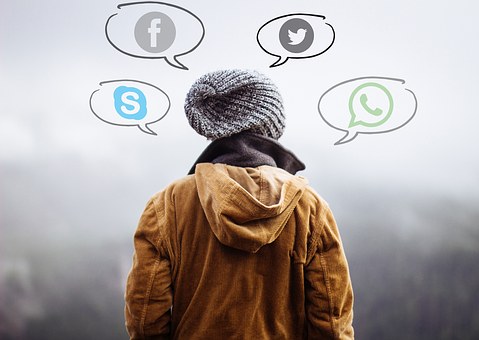

GIF stands for “Graphical Interchange Format” which is essentially a file that is compressed for reducing the transfer time. They have become a sort of currency for communicating emotions and things which may not communicate easily through words or simple images.
Types of GIFs
- Reaction: This type of GIF is usually seen on social media and messaging sites. They are primarily used for commenting and as a reaction to other posts, information, or images
- Illustrations: These are GIFS which have been made or illustrated by artists and have then been made into GIFS. A lot of this art can usually be found on Giphy.
- Illusions: These are GIFS which serve a primary purpose of looking confusing or deceive. Try not looking at them for too long because they tend to leave viewers confused and dizzy.
- Cinemagraphs: They are generally images which have only specific animated sections, usually a simple motion on a loop. They tend to be used primarily in GIFS intending to communicate some Calm or peacefulness.
- Brands: this type of GIF is explicitly used for branding and marketing purpose. When it is used appropriately, it can be in the form of logos, new items, and sales and can be a great addition to marketing and advertising. A lot of brands have started to understand the importance of having marketing content which can be easily shared and it not completely centric to the brand and its image. In general, any content which can be identified as related to the brand but also has its uses is a good marketing strategy as it has the potential to spread on its own.

There are numerous ways that GIFs can be used for marketing
- GIF brand assets: There are numerous elements related to the brand image which can potentially be made into small animations for circulation. This includes the LOGO, related images, and taglines. In general, such animated content tends to draw more attention and is shared more on social media.
- Replies and comments: In today’s social scenario, an organization that uses GIFS in its social media and for responses will be considered relatively tech savvy. It is a good idea for gaining attention and getting people to talk about the brand, especially the younger generations.
- Include GIFs in infographics: Infographics can be a bit of an information overload irrespective of the amount of illustration that has been added in. Using GIFs can help to make them more fun and less strenuous. A good infographic containing GIFs will appear seamless and the GIFs will function as an integral part of the message that the infographic wishes to convey. Even a simple animated title or specific important sections can go a long way towards making a difference in how the audience perceives the infographics.
- Social Media: GIFS can be shared across all social media platforms as a fun and easy way for communication. Use GIFs on story posts on Instagram and Snapchat to increase the amount of interest you get from your followers. It works even better if these are GIFS which have been created for your specific brand.
- Processes: GIFs can be a handy tool when you wish to illustrate a process or the method of carrying out certain things. It can be a fun way to make boring step-by-steps appear interesting and more fun.

While GIFs may be a fun and entertaining new addition to the social media and marketing strategies of any organization, it is important to remember that they are not to be used as a primary marketing tool as stand-alone GIFs will not be taken very seriously. While they may be successful if used in combination with other marketing techniques and practices, they do not have much chance of succeeding on their own as they will lose attention very fast. Hence, those involved in marketing practices must understand the amount of GIF usage which can be termed useful depending on the industry which they are in and the audiences that they are hoping to target. We hope that this article has been useful in improving your knowledge about GIFs and the potential which they hold n the spheres of marketing and brand identity.